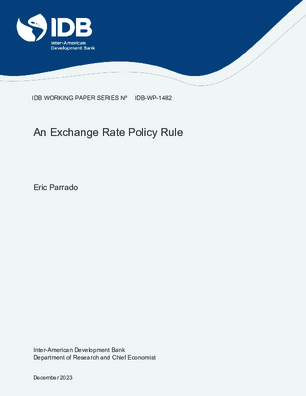An Exchange Rate Policy Rule
Date
Dec 2023
This paper introduces a novel monetary policy framework where the exchange rate becomes the central instrument. Using Singapore as a case study, it explores the Monetary Authority's adoption of the exchange rate as the primary tool since 1981, diverging from conventional approaches centered on interest rates or monetary aggregates. The estimated exchange rate reaction function aligns well with actual deviations, supporting the hypothesis that Singapore's forward-looking policy rule effectively responds to inflation and output volatility, especially during economic crises. This framework offers a promising alternative for countries with open economies and challenges in implementing traditional interest rate instruments.




